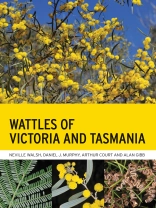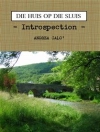Wattles (Acacia) are among the most vibrant plants in the southern Australian bush, with their iconic yellow blooms particularly visible in late winter and spring. As the largest genus of flowering plant in Australia, they are one of the most resilient, recognisable and culturally significant native plants. However, they can be difficult to identify at a species level.
This comprehensive guide to all 121 species and subspecies of wattles found in Victoria and Tasmania includes notes on the habitat, distribution and special properties of each species. Identification keys, high-quality field photos and distribution maps enable easy identification, and fascinating detail on the etymology of species names, their use as food and the taxonomic history of the group is also included. This guide will inform and inspire botanists, conservationists and wattle enthusiasts.
Table of Content
Preface
About the authors
Acknowledgements
Introduction
Acacia: What’s in a name?
About wattles
Some uses of wattles
The descriptive pages
Keys to species
Key to Acacia in Victoria
Key to Acacia in Tasmania
Species accounts
Group A: Species with phyllodes; flower heads globular, on unbranched stalks in leaf axils
Group B: Species with phyllodes; flower heads globular, in racemes
Group C: Species with phyllodes; flowers in cylindrical spikes
Group D: Species with bipinnate leaves; flower heads globular, in simple or branched racemes
Incipiently or sparingly naturalised wattles in Victoria and Tasmania
Glossary of botanical terms
Further reading
Index to species
About the author
Alan Gibb (1943–2022) was a farmer, bushman and self-taught photographer. Known for his deep knowledge of flora and fauna, his wildlife photography has been exhibited and used for various publications. He led nature tours through outback Australia for many years where his particular love of Australian wattles was nurtured. The Mt Typo Wattle (Acacia boormanii subsp. gibba) was named in his honour.












